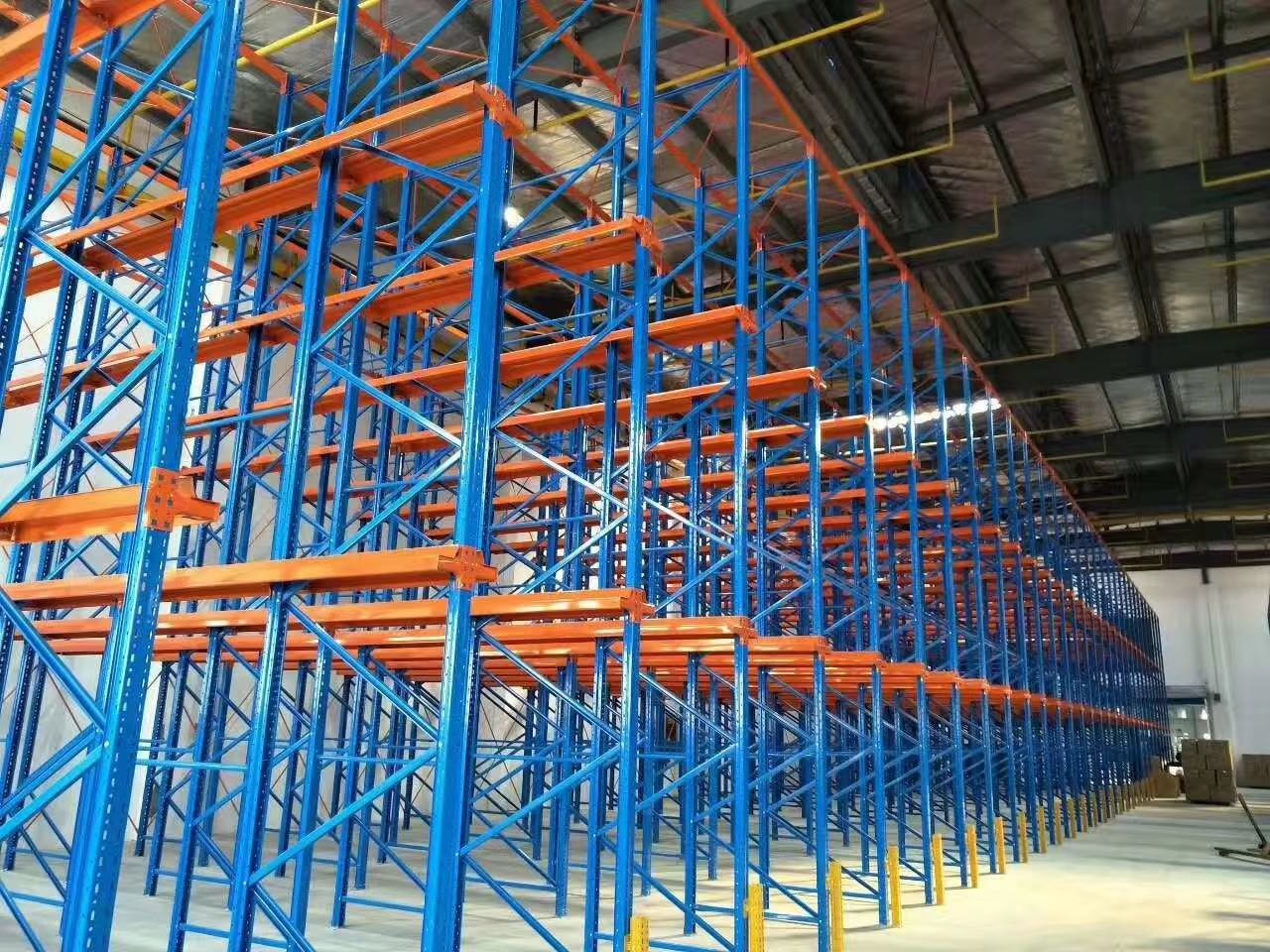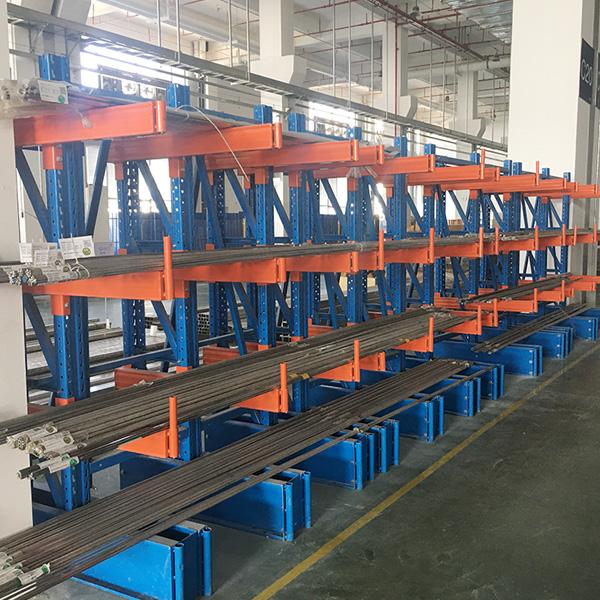In the world of logistics, manufacturing, and large-scale e-commerce, storage isn't just an afterthought—it's a critical component of operational efficiency and safety. At the heart of any robust storage solution is the heavy duty racking system for warehouse operations. These structural behemoths are engineered to support immense weights, maximize cubic space, and streamline inventory management. Whether you're storing pallets of raw materials, finished goods, or anything in between, understanding the intricacies of these systems is paramount. This article delves into the various types of warehouse racking heavy duty systems, their applications, and key considerations for selection and maintenance, including how to find heavy duty warehouse racking near me.

A heavy duty racking system for warehouse is not your average shelving unit. It is a engineered structure designed specifically for industrial environments to store palletized goods or exceptionally heavy items. The defining characteristic of "heavy duty" is its impressive load-bearing capacity, often ranging from several thousand pounds per pallet position to well over 10,000 pounds. These systems are typically constructed from high-strength, cold-rolled or structural steel and are designed with specific methodologies like the Unified Building Code (UBC) or similar standards to ensure they can withstand the rigors of daily forklift traffic and seismic events.
The primary purpose of implementing a warehouse racking heavy duty solution is to optimize vertical space. By building upwards, businesses can dramatically increase their storage density without expanding their building's footprint, leading to significant cost savings and improved operational throughput. The right system turns chaotic floor stacking into an organized, accessible, and safe inventory repository.
While the term is broad, most heavy duty warehouse racking shelving solutions fall into a few distinct categories, each with its own advantages.
Heavy Duty Warehouse Pallet Racking
This is the most common and recognizable form of industrial storage. The selective pallet rack system, a quintessential heavy duty warehouse pallet racking solution, allows direct access to every single pallet. It consists of upright frames (the vertical components) and horizontal beams that create load bays. Its simplicity and versatility make it suitable for a vast array of products and is ideal for warehouses with a high SKU count where every item needs to be accessible at any time.
Other types within this family include:
Drive-In/Drive-Through Racking: Designed for high-density storage of homogeneous products with low SKU variety. Forklifts drive directly into the rack structure to place and retrieve pallets.
Push-Back Racking: A dynamic system where pallets are stored on wheeled carts on slightly inclined rails. When a new pallet is pushed in, it nudges the existing pallets back, offering last-in, first-out (LIFO) inventory access.
Pallet Flow Racking: Utilizes a gravity-fed system of rollers or wheels. Pallets are loaded from the higher end and glide smoothly to the lower end for picking, making it a perfect first-in, first-out (FIFO) solution.
Heavy Duty Warehouse Racking Shelving
When items are not palletized or are smaller but still very heavy, heavy duty warehouse racking shelving comes into play. This is often what people envision when they think of heavy duty shelves warehouse racking system. These systems feature solid decks—often made of particle board, steel mesh, or wood—supported by robust beams and uprights. They are perfect for storing parts, tools, equipment, and boxes that are too heavy for light-duty shelving but don't require a full pallet position. A common and highly adaptable variant is the warehouse racking shelving heavy duty steel garage storage rack, which blends industrial strength with versatility for environments like automotive garages, maintenance shops, and smaller distribution centers.
Selecting the perfect system is only half the battle; finding a reliable partner for supply and installation is equally crucial. A search for heavy duty warehouse racking near me is a common starting point for many businesses, and for good reason.
Why Local Matters:
Site Assessments: Local suppliers can send experts to your facility to conduct a thorough analysis of your space, inventory, and workflow. This on-site consultation is invaluable for designing a system that fits perfectly and meets all your requirements.
Logistics and Shipping: Procuring a large heavy duty racking system for warehouse involves shipping heavy, bulky components. Working with a local or regional supplier can significantly reduce freight costs and lead times.
Installation Services: Professional installation is non-negotiable for safety and integrity. Local companies have certified installation crews who understand local building codes and can ensure your system is erected correctly.
Ongoing Support and Maintenance: A local relationship ensures quicker response times for inspections, repairs, and purchasing additional components as your storage needs evolve.
When evaluating suppliers, look for experience, positive customer testimonials, and a commitment to safety standards like those set by the Rack Manufacturers Institute (RMI).

Even the strongest warehouse racking heavy duty system is susceptible to problems if not properly specified, installed, and maintained. Being aware of these common issues is the first step in preventing them.
Improper Installation: This is one of the most critical failure points. If uprights are not plumb, beams not properly seated, and base plates not anchored correctly, the entire structure is compromised. Always insist on professional installation.
Overloading: Every system has a defined maximum load capacity per level. Exceeding this capacity is extremely dangerous and can lead to catastrophic racking collapse. Clearly label load capacities and train all staff.
Forklift Impact Damage: Daily operations inevitably lead to collisions. Even a minor impact can misalign an upright frame or damage a beam's connector. A bent upright can reduce the overall load capacity of the entire bay by up to 50% or more.
Poorly Distributed Loads: Pallets must be stable and centered on the beams. An uneven or off-center load creates excessive point stress on the beams, which can cause bending or failure.
Lack of Regular Inspections: Without a formal, scheduled inspection program, minor damage goes unnoticed and can evolve into a major hazard. Inspections should be conducted weekly by internal staff and annually by a qualified rack safety inspector.
Using Non-Compatible or Damaged Components: Mixing components from different manufacturers or systems is dangerous. Similarly, replacing a damaged beam with a second-hand or non-certified part undermines the structural integrity of the entire system.
Ignoring Building and Safety Codes: Systems must be designed to account for local seismic activity and building codes. Neglecting these factors can have dire consequences in the event of an earthquake or other disaster.
Protecting your investment in a heavy duty warehouse pallet racking system involves a proactive approach to safety.
Implement a Inspection Protocol: Conduct weekly visual inspections looking for signs of damage, such as dents, bends, cracks, or rust. Document every inspection.
Invest in Protection: Install column guards, rack protectors, and end-of-aisle barriers to absorb the energy from forklift impacts, protecting the critical structural elements.
Train Your Team: Ensure every forklift operator is trained and certified. Educate all warehouse staff on the importance of rack safety, including proper loading techniques and how to identify and report damage immediately.
Address Damage Immediately: Have a clear protocol for what constitutes damage that requires immediate off-loading and repair. Never ignore even seemingly small dents.
Work with Professionals: From initial design to annual inspections, partner with qualified professionals who specialize in warehouse racking shelving heavy duty steel garage storage rack and larger industrial systems.
Choosing and maintaining a heavy duty racking system for warehouse operations is a significant decision that impacts safety, efficiency, and profitability. From understanding the different types of heavy duty warehouse racking shelving to knowing the importance of finding a reliable local partner via a search for heavy duty warehouse racking near me, each step requires careful consideration. By selecting the right heavy duty shelves warehouse racking system, such as a robust heavy duty warehouse pallet racking setup or a versatile warehouse racking shelving heavy duty steel garage storage rack, and committing to a rigorous safety and maintenance culture, you can build a storage infrastructure that supports your business's growth for years to come.
 Wechat
Wechat
 Whatsapp
Whatsapp